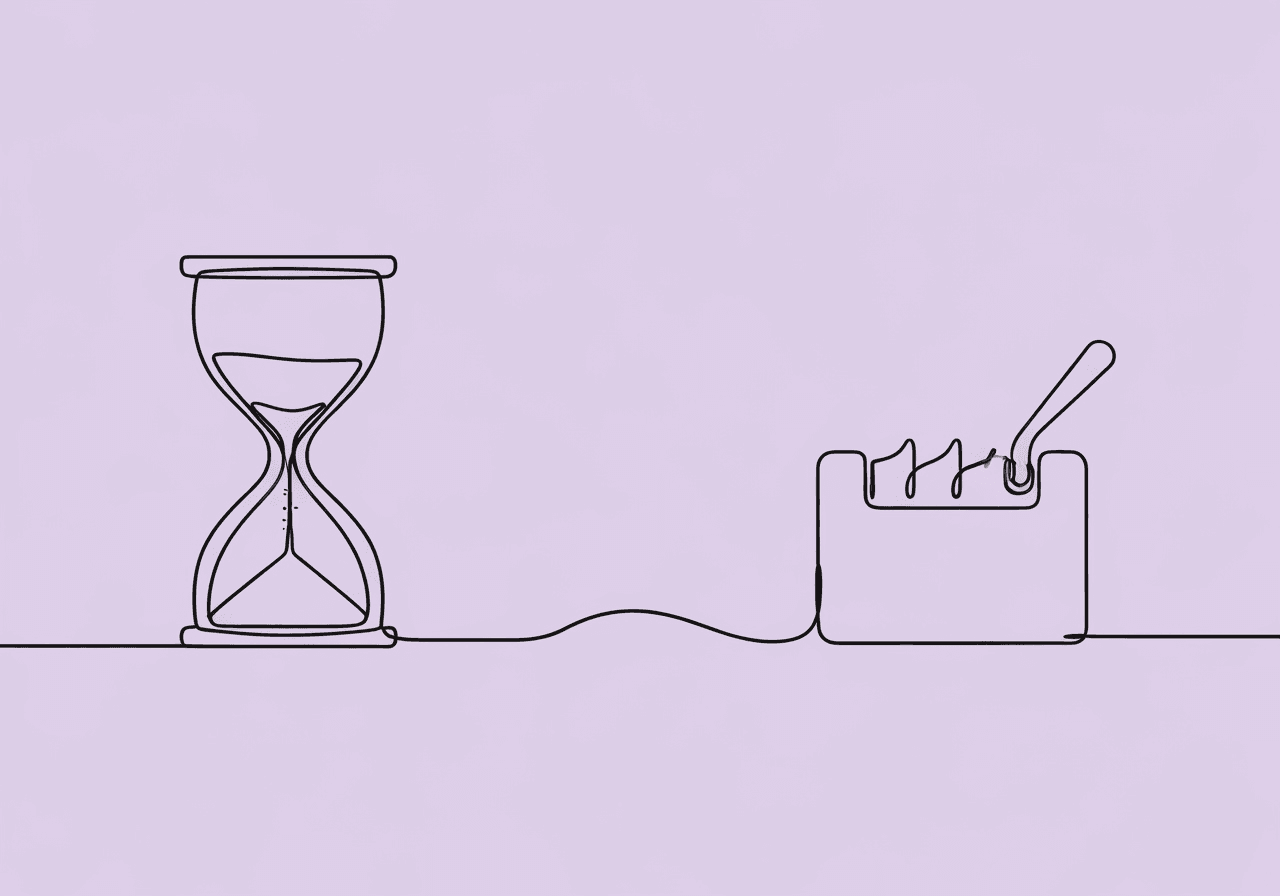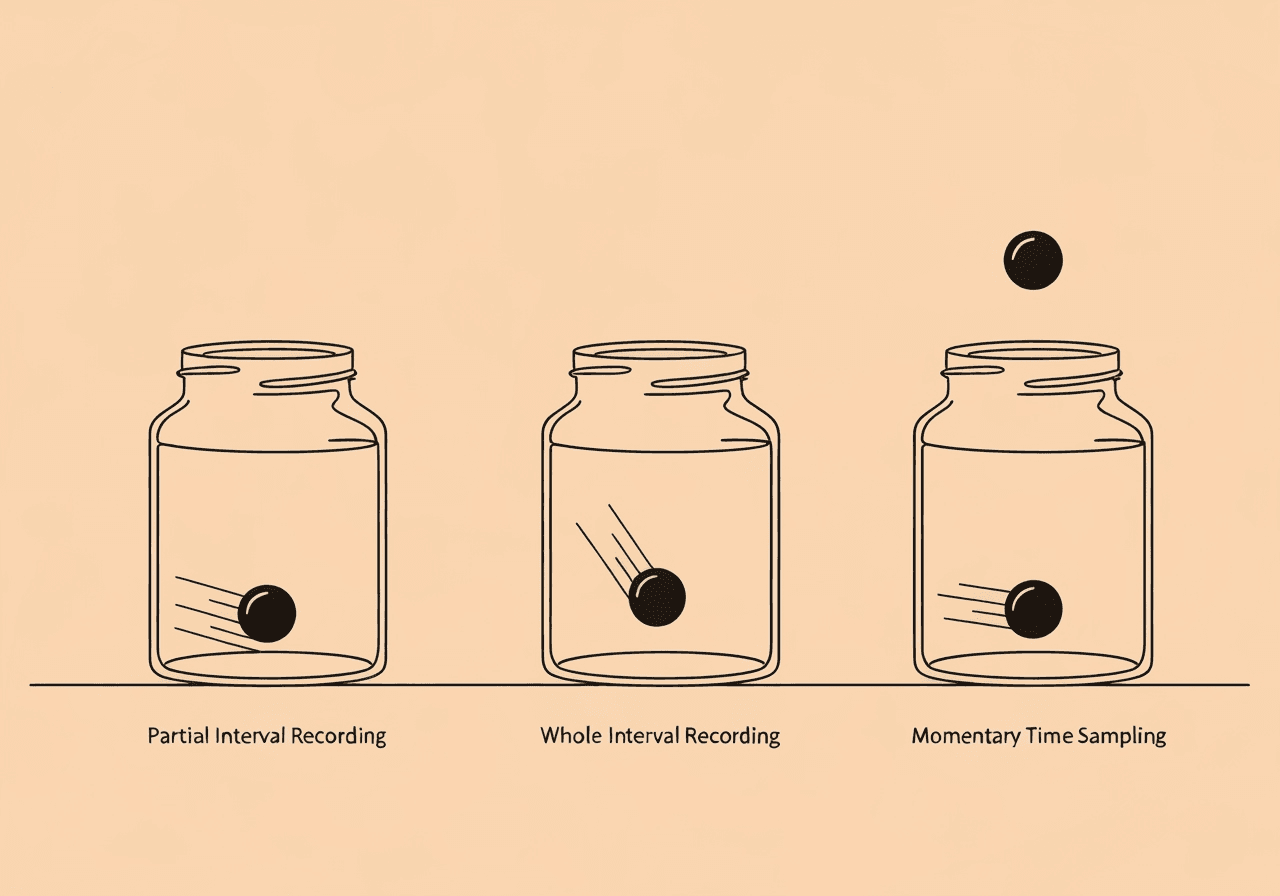Frequency vs Duration ABA: Measurement Guide

When working in ABA therapy, choosing the right data collection method is crucial for successful interventions. For RBTs and BCBAs, grasping frequency vs duration ABA measurement helps you track behaviors like tantrums or skill gains with precision. Wrong picks can distort data, but solid ones reveal true progress and function.
This guide dives into these vital ABA data collection methods, compares how they work, and shares a straightforward BCBA framework for decisions. You'll see definitions, everyday examples, ways to blend them, and RBT tips for solid, audit-proof records. In the end, you'll pick measures that fit BACB rules and client goals.
- Core definitions of frequency and duration recording
- Key differences and behavior examples
- A step-by-step guide for BCBAs on selection
- Combining measures for robust documentation
- RBT tips for accurate, compliant application
Understanding Frequency Recording in ABA
Frequency recording counts the exact number of times a behavior occurs within a defined observation period. This continuous measurement approach, outlined in the BACB's RBT Task List (2nd ed., 2022), suits discrete behaviors with clear starts and ends. RBTs tally instances without timing each one, making it straightforward for high-rate actions.
Take a learner who requests breaks (mands) five times during a 30-minute session. Frequency captures that count directly. Artemis ABA (2024) points out this method shines when the sheer number of occurrences reveals patterns, such as aggression episodes signaling environmental triggers. It skips time considerations at first, but you can convert raw counts to rate by dividing by session length for comparisons across variable durations.
Frequency data supports discrete trial measurement in structured teaching, where counting correct responses tracks skill mastery. It's less ideal for ongoing behaviors, though, as it overlooks intensity. BCBAs count on this for baseline data in functional assessments, ensuring interventions target occurrence reduction effectively.
To implement, RBTs use clickers or apps for tallies, defining the behavior operationally first—like "hand-raising without permission" per session guidelines. This precision aids BCBA audits, aligning with ethical standards for reliable measurement.
Exploring Duration Recording in ABA
Duration recording measures the total time a behavior lasts, from onset to offset, using tools like stopwatches or apps. This ABA data collection method captures elapsed time for behaviors that vary in length, providing insights into persistence or tolerance levels. The BACB emphasizes its use in the RBT Task List for continuous procedures, especially when behavior length impacts safety or learning (BACB, 2022).
Consider on-task behavior during homework: if a child stays focused for 15 minutes, duration quantifies engagement precisely. Connect n Care ABA (2024) notes this is vital for tantrums or self-injurious actions, where prolonged episodes signal escalation risks. Total duration sums all instances, while per-occurrence tracking details variability.
Unlike frequency, duration ignores counts, focusing on temporal aspects. For high-intensity behaviors, it reveals if interventions shorten episodes, informing adjustments like fade schedules. RBTs start timers at clear behavioral definitions, such as "crying and flopping to the floor," to maintain accuracy.
In practice, duration pairs well with session logs for graphing trends over weeks. BCBAs use it to evaluate quality-of-life impacts, ensuring data drives ethical, client-centered plans without overemphasizing volume.
Frequency vs Duration: Key Differences and Behavior Examples
Choosing between frequency vs duration ABA hinges on the target behavior's topography and clinical goals. Frequency tallies occurrences, ideal for brief, repeatable actions, while duration tracks time, suiting sustained or variable-length events. Both fall under continuous measurement but serve distinct purposes in ABA data collection methods.
Frequency shines for discrete behaviors like mands or aggressions. Picture a session with five instances of property destruction. That count highlights escape-maintained patterns, as AllDayABA (2024) explains in its guidelines. It simplifies data for BCBAs analyzing intervention efficacy without time biases.
Duration fits ongoing behaviors such as tantrums or on-task time. On the flip side, measuring a 10-minute meltdown versus three one-minute bursts shows intensity differences, crucial for safety planning (Artemis ABA, 2024). It's particularly useful in natural environments where behaviors blend into daily routines.
| Aspect | Frequency Recording | Duration Recording |
|---|---|---|
| What It Measures | Number of occurrences | Total or per-instance time |
| Best For | Discrete, countable behaviors (e.g., hand-raising) | Prolonged behaviors (e.g., off-task time) |
| Tools Needed | Tally counters or apps | Stopwatch or timer apps |
| Example Output | 8 requests for attention | 12 minutes of non-compliance |
| Limitations | Ignores length; misleading for long sessions | Doesn't capture how often; labor-intensive |
In discrete trial measurement, frequency often dominates for response counts, but duration adds depth for skill endurance. BCBAs select based on function: frequency for access-maintained behaviors, duration for sensory ones. Real-world errors, like using frequency for endless vocal stereotypy, can skew data—always align with behavioral definitions.
This comparison underscores why blending awareness of both elevates measurement selection BCBA decisions.
A BCBA's Guide to Selecting Measurement Procedures
BCBAs approach measurement selection BCBA systematically, evaluating behavior function, topography, and practicality per BACB Ethics Code (2020). Start with the target: Is it discrete (favor frequency) or temporal (favor duration)? Tools like flowcharts from How to ABA (2024) guide this: Assess if the behavior has a clear end—yes for frequency; variable length—yes for duration.
Consider clinical relevance. For aggression linked to attention, frequency tracks prompts for intervention. Tantrums maintained by escape? Duration reveals disruption levels, informing breaks or prompts (Raven Health, 2024). Factor in setting: Clinic sessions suit precise frequency; homes may need duration for real-life endurance.
A simple decision flowchart:
- Define behavior operationally (e.g., "screaming >60dB").
- Determine dimension: Countable? Use frequency. Time-based? Use duration.
- Evaluate feasibility: High-rate behaviors overwhelm frequency—switch to rate or interval.
- Test interobserver agreement: Aim for at least 80% reliability, ideally higher (BACB Ethics and Standards Resources).
- Review goals: Skill acquisition leans frequency; reduction leans duration.
This process ensures data validity, avoiding common pitfalls like mismatched measures that delay progress.
Combining Measures and Documentation Implications
Sometimes, frequency vs duration ABA isn't either/or—combining them yields comprehensive insights, especially for variable sessions. Rate refines frequency by dividing counts by time (e.g., 5 mands per 20 minutes = 0.25/min), standardizing data across lengths (PMC, 2019). Pair with duration for high-intensity behaviors: Track tantrum counts (frequency) and total time (duration) to gauge severity.
Documentation implications are key for audits. BACB requires accurate, graphed summaries (2022); combined data supports this via line graphs showing trends. For instance, if frequency drops but duration rises, adjust for incomplete fading. RBTs log both in HIPAA-compliant tools, noting session variables like prompts.
Benefits include:
- Holistic views: Frequency shows volume; duration adds impact.
- Intervention tweaks: High frequency/low duration suggests quick prompts; reverse indicates endurance building.
- Compliance: Aligns with BCBA oversight, reducing errors in progress reports.
In discrete trials, combine for mastery criteria—count trials (frequency) while timing completion (duration). This approach enhances ABA data collection methods, turning raw numbers into actionable strategies.
Practical Application for RBTs and BCBA Audit Compliance
RBTs implement frequency and duration daily, ensuring fidelity to BCBA plans. For frequency, tally during trials without interrupting flow—use apps for real-time entry. Duration requires vigilant timing: Start at onset, stop at offset, and sum totals post-session (BT Exam Review, 2024).
Compliance starts with preparation: Review operational definitions, calibrate tools, and train on IOA. Audits check for consistency—BCBAs verify at least 80% agreement via spot-checks (Interobserver Agreement in ABA). Common challenges: Distractions skew duration; high rates overload frequency—mitigate with breaks or tech.
RBT tips:
- Practice in mock sessions to build speed.
- Document anomalies (e.g., interrupted timing) immediately.
- Graph data weekly for BCBA review, highlighting trends.
Accurate application not only meets BACB standards but empowers RBTs to contribute meaningfully to client outcomes.
Frequently Asked Questions
How do frequency and duration measurements differ in ABA data collection methods?
Frequency counts behavior occurrences, like 10 hand flaps, while duration tracks time, such as a 5-minute tantrum. Frequency suits discrete events; duration fits sustained ones. According to Artemis ABA (2024), this distinction ensures precise tracking, with frequency easier for tallies but duration revealing intensity.
When is duration measurement more appropriate than frequency in ABA?
Duration is ideal for behaviors where length matters, like on-task time or prolonged aggression, as it quantifies impact on learning or safety. Frequency works better for countable actions like mands. Connect n Care ABA (2024) highlights tantrums as a prime example, where timing episodes informs de-escalation strategies.
How do BACB guidelines recommend using frequency and duration in ABA therapy?
BACB's RBT Task List (2022) mandates continuous procedures like frequency for discrete behaviors and duration for temporal ones, emphasizing reliability and operational definitions. Select based on behavior dimension to support data-driven decisions, ensuring ethical practice (RBT® Task List (2nd ed.)).
What are the advantages of rate over frequency measurement in ABA?
Rate (frequency divided by time) standardizes data for unequal sessions, like 2 responses per minute, aiding comparisons. Frequency alone can mislead in short versus long observations. Hope Education Services (2024) notes rate's accuracy for progress tracking (Frequency Versus Rate (BCBA Exam Prep)).
How do you decide between frequency and duration for a specific behavior in ABA?
Assess if the behavior is countable (frequency) or time-bound (duration), considering goals and feasibility. For aggressions, frequency tracks instances; for stereotypy, duration measures persistence. How to ABA (2024) recommends flowcharts tying to function and topography.
What challenges arise when measuring frequency versus duration in ABA?
Frequency can overwhelm with high rates, missing intensity; duration demands constant timing, risking errors in dynamic settings. Both require clear definitions for interobserver agreement. AllDayABA (2024) suggests training and tech to address these for reliable data.
Conclusion: Mastering Frequency vs Duration in ABA
Mastering frequency vs duration ABA equips RBTs and BCBAs to build robust interventions grounded in precise data. From counting mands to timing engagement, these methods reveal behavior functions, guiding ethical adjustments that enhance client progress.
Practically, this means fewer missteps in audits and stronger outcomes, as combined insights like rate-from-frequency clarify trends. Start by auditing your current protocols: Review one behavior's data for alignment, then train on tools like timers. Next, integrate a flowchart into team meetings for consistent selection. Finally, explore BACB resources for updates—empowering your practice with evidence-based clarity.
(Word count: 1,756)
Popular in Behavior Analysis Concepts
- 1
ABA Prompting Hierarchy & Prompt Fading: RBT How-To Guide with Examples
7177 min read - 2
Functional Behavior Assessment ABA: Complete 2025 Guide [Step-by-Step]
6066 min read - 3
DRA vs DRI vs DRO vs DRL: The Clear RBT Comparison Guide
6039 min read - 4
Partial Interval vs Whole Interval vs MTS: ABA Guide
5106 min read - 5
Master IOA Formulas and Methods for Data Integrity
4438 min read
Popular in Behavior Analysis Concepts
- 1
ABA Prompting Hierarchy & Prompt Fading: RBT How-To Guide with Examples
7177 min read - 2
Functional Behavior Assessment ABA: Complete 2025 Guide [Step-by-Step]
6066 min read - 3
DRA vs DRI vs DRO vs DRL: The Clear RBT Comparison Guide
6039 min read - 4
Partial Interval vs Whole Interval vs MTS: ABA Guide
5106 min read - 5
Master IOA Formulas and Methods for Data Integrity
4438 min read
Related Resources
Explore more helpful content on similar topics

Partial Interval vs Whole Interval vs MTS: ABA Guide
Discover Partial Interval vs Whole Interval vs MTS in ABA: Explore definitions, pros, cons, biases like overestimation and underestimation, and a BCBA decision tree for choosing the best method to ensure accurate data collection and high IOA.

Data Stability vs Variability in ABA: A Guide for BCBAs
Discover data stability vs variability in ABA: essential for BCBAs and RBTs. Learn stable baseline criteria, manage high variability, and implement documentation strategies to drive effective interventions.

Master ABA Stimulus Equivalence: Derived Relations Guide
Master ABA stimulus equivalence and derived stimulus relations. Explore reflexivity, symmetry, transitivity, and equivalence classes to boost your ABA practice and promote effective generalization in behavior analysis.